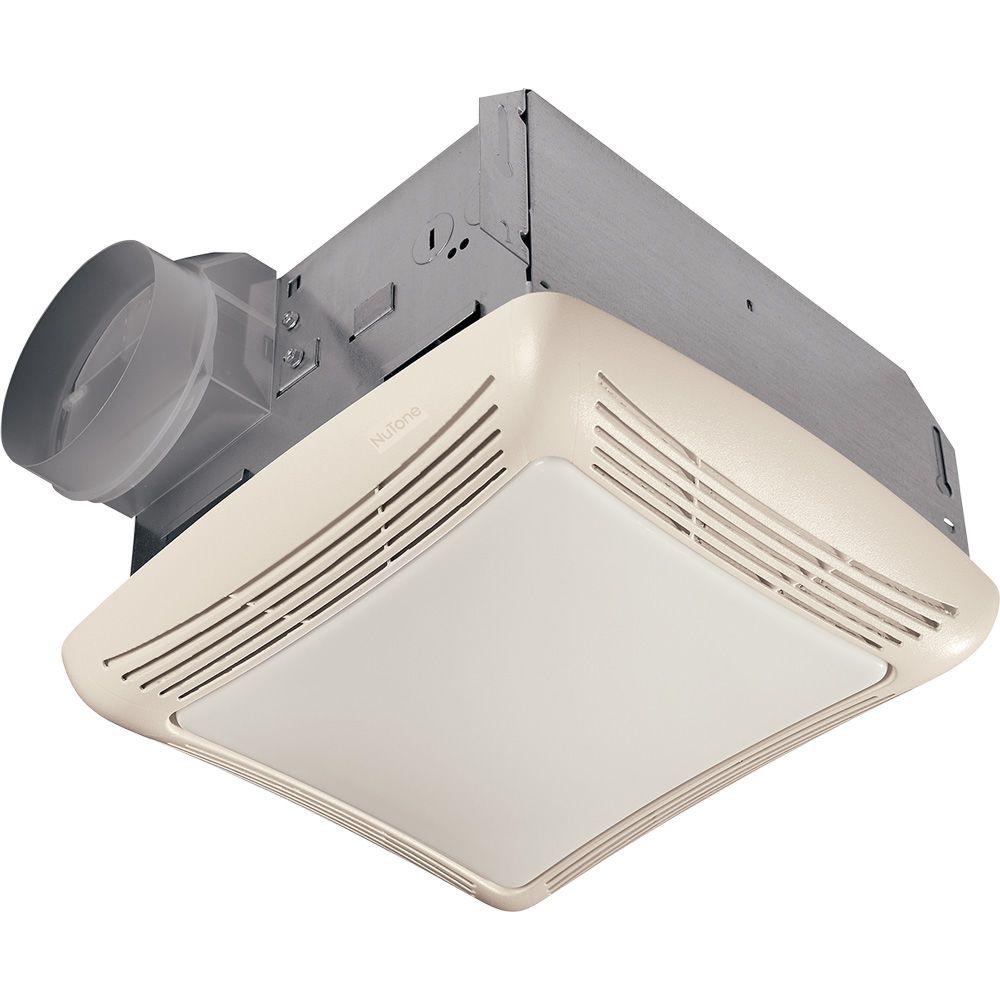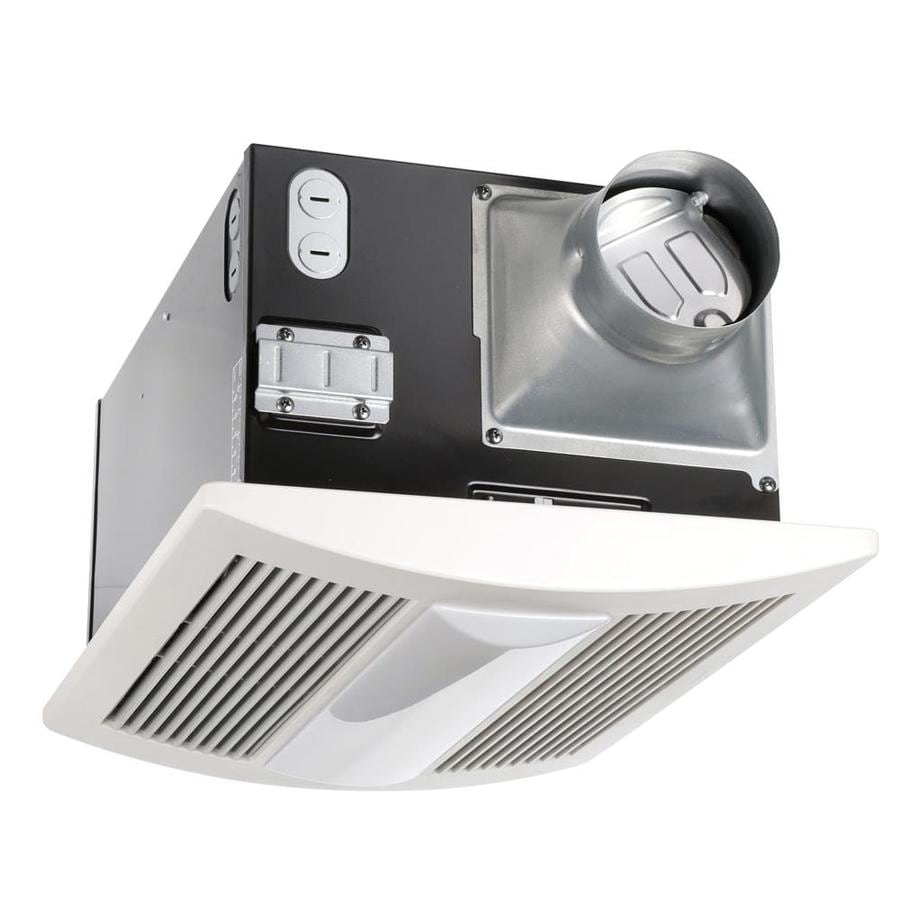Understanding Bathroom Exhaust Fans with Heaters: Bathroom Exhaust With Heater

Bathroom exhaust fans with heaters are a practical and convenient solution for creating a comfortable and moisture-free bathroom environment. These units combine the functionality of a standard exhaust fan with the added benefit of heating, making them ideal for colder climates or for those who prefer a warm bathroom experience.
Types of Bathroom Exhaust Fans with Heaters
There are several types of bathroom exhaust fans with heaters available in the market, each offering unique features and benefits. Understanding the different types will help you choose the best option for your specific needs.
- Inline Fans: These fans are typically mounted in the ductwork, providing a more discreet and space-saving solution. They are often preferred for larger bathrooms or those with complex ductwork layouts.
- Ceiling Fans: As the name suggests, ceiling fans are mounted directly on the ceiling, offering a traditional and aesthetically pleasing option. They are often equipped with built-in lights, providing additional functionality.
- Wall-Mounted Fans: Wall-mounted fans are a versatile option, allowing for easy installation in various locations within the bathroom. They are a popular choice for smaller bathrooms or those with limited ceiling space.
Advantages of Using a Bathroom Exhaust Fan with a Heater
Bathroom exhaust fans with heaters offer several advantages over traditional exhaust fans, making them a worthwhile investment for many homeowners.
- Improved Comfort: The integrated heating element provides warmth during cold weather, making showering or bathing a more enjoyable experience.
- Moisture Control: The fan efficiently removes moisture from the air, preventing condensation and mold growth, creating a healthier and more hygienic bathroom environment.
- Energy Efficiency: Some models feature energy-efficient technologies like variable speed controls, allowing you to adjust the fan’s performance based on your needs, minimizing energy consumption.
- Convenience: Combining ventilation and heating in one unit simplifies installation and reduces the need for separate appliances, offering a streamlined and space-saving solution.
Disadvantages of Using a Bathroom Exhaust Fan with a Heater
While bathroom exhaust fans with heaters offer numerous benefits, it’s essential to consider potential drawbacks before making a purchase.
- Higher Initial Cost: Bathroom exhaust fans with heaters are generally more expensive than traditional exhaust fans due to the integrated heating element.
- Higher Energy Consumption: The heating element can increase energy consumption, especially if used frequently or for extended periods. This can result in higher utility bills.
- Potential Noise: Some models can produce noticeable noise, particularly during operation, which may be a concern for those who prefer a quiet bathroom environment.
- Limited Heating Capacity: The heating element may not be sufficient to provide significant warmth in large bathrooms or in extremely cold climates.
Features to Consider When Selecting a Bathroom Exhaust Fan with a Heater
When choosing a bathroom exhaust fan with a heater, it’s essential to consider several factors to ensure you select the best option for your specific needs and budget.
- Heating Capacity: Determine the appropriate heating capacity based on the size of your bathroom and your desired temperature.
- Airflow Rate: The airflow rate should be sufficient to effectively remove moisture and odors from the bathroom.
- Noise Level: Consider the noise level of the fan, especially if it’s located near a bedroom or other quiet areas.
- Energy Efficiency: Look for models with energy-efficient features like variable speed controls and low-wattage heating elements.
- Installation Type: Choose an installation type that suits your bathroom’s layout and your personal preferences, such as inline, ceiling, or wall-mounted.
- Additional Features: Consider features like built-in lights, humidity sensors, timers, and remote controls for added convenience and functionality.
Installation and Operation

Installing and operating a bathroom exhaust fan with a heater is a straightforward process that involves several steps, ensuring proper ventilation and warmth in your bathroom. This section will provide a comprehensive guide to installing, wiring, operating, and maintaining your bathroom exhaust fan with a heater.
Installation Process
The installation process involves mounting the fan unit to the ceiling or wall, connecting it to the electrical system, and ensuring proper ventilation.
- Choose the Right Location: Select a location that is central to the bathroom, away from any obstructions, and allows for adequate airflow.
- Prepare the Mounting Area: Mark the desired location for the fan unit and cut a hole in the ceiling or wall using a jigsaw or drywall saw.
- Mount the Fan Unit: Secure the fan unit to the ceiling or wall using appropriate screws or brackets.
- Install the Ductwork: Connect the exhaust duct to the fan unit and run it to the exterior of the house, ensuring a smooth and airtight connection.
- Connect the Electrical Wiring: Connect the fan unit’s wiring to the electrical system using appropriate wire connectors.
- Test the Fan: Turn on the fan to ensure it is functioning properly and check for any leaks or air resistance.
Wiring and Connections
The wiring process involves connecting the fan unit’s electrical wires to the house’s electrical system.
- Identify the Wires: Locate the black (hot), white (neutral), and green (ground) wires on the fan unit.
- Connect the Wires: Connect the black wire to the black wire from the electrical system, the white wire to the white wire, and the green wire to the green wire.
- Secure the Connections: Secure the wire connections using wire connectors or a junction box.
- Install a GFCI Outlet: Install a ground fault circuit interrupter (GFCI) outlet on the circuit to protect against electrical shocks.
Operation and Maintenance
Proper operation and maintenance are crucial for ensuring the longevity and optimal performance of your bathroom exhaust fan with a heater.
- Regular Cleaning: Clean the fan blades and vent cover regularly to remove dust and debris.
- Check the Filter: Check the filter regularly and replace it as needed to prevent dust and lint buildup.
- Inspect the Ductwork: Inspect the exhaust duct for any leaks or blockages and repair or clean them as needed.
- Lubricate Moving Parts: Lubricate the fan motor and other moving parts as recommended by the manufacturer.
- Avoid Overheating: Avoid running the heater for extended periods to prevent overheating.
Troubleshooting Common Problems
Troubleshooting common problems can help you identify and resolve issues quickly.
- Fan Not Running: Check the power supply, fuse, or circuit breaker.
- Fan Making Noise: Inspect the fan blades for debris or damage.
- Heater Not Working: Check the thermostat settings, power supply, and heater element.
- Exhaust Not Working: Check the ductwork for blockages or leaks.
Benefits and Applications

Bathroom exhaust fans with heaters offer a unique combination of ventilation and warmth, providing numerous benefits in various scenarios. They effectively remove moisture and odors while simultaneously providing a comfortable temperature, making them a valuable addition to any bathroom.
Benefits of Bathroom Exhaust Fans with Heaters
The benefits of using a bathroom exhaust fan with a heater extend beyond basic ventilation. Here are some key advantages:
- Improved Air Quality: These fans efficiently remove moisture and odors, preventing the buildup of mildew, mold, and unpleasant smells, contributing to a healthier and more pleasant bathroom environment.
- Enhanced Comfort: By providing warmth, these fans create a more comfortable experience during showers, especially in cold climates, eliminating the need for additional heating sources.
- Reduced Energy Consumption: By effectively removing moisture, these fans can reduce the need for excessive heating in the entire bathroom, potentially lowering energy bills.
- Prevention of Condensation: The heating element helps prevent condensation on bathroom surfaces, minimizing the risk of water damage and promoting a cleaner environment.
- Increased Safety: The fan’s heating element can help prevent icy bathroom floors, reducing the risk of slips and falls, especially in cold climates.
Applications of Bathroom Exhaust Fans with Heaters
These fans are particularly useful in various applications, catering to specific needs:
- Bathrooms with Showers: The fan effectively removes moisture generated during showers, preventing condensation and maintaining a comfortable temperature, especially in colder climates.
- Cold Climates: In regions with cold winters, these fans provide a warm and comfortable experience during showers, reducing the need for additional heating sources.
- Areas with High Humidity: These fans are highly effective in areas with high humidity, preventing mold growth and maintaining a healthier indoor environment.
- Bathrooms with Limited Ventilation: For bathrooms with limited natural ventilation, these fans ensure adequate air circulation, removing moisture and odors effectively.
Comparison with Standard Exhaust Fans, Bathroom exhaust with heater
While standard exhaust fans are effective for ventilation, they lack the heating capabilities of their combined counterparts. This difference creates a distinct advantage for bathroom exhaust fans with heaters:
- Comfort: Bathroom exhaust fans with heaters provide a comfortable experience during showers, especially in cold climates, by removing moisture and providing warmth.
- Moisture Control: These fans effectively remove moisture, preventing condensation and promoting a healthier bathroom environment, while standard exhaust fans only remove air.
- Energy Efficiency: By reducing the need for excessive heating, these fans can contribute to lower energy consumption compared to standard fans.
Types of Bathroom Exhaust Fans with Heaters
Here’s a table outlining the different types of bathroom exhaust fans with heaters, their features, and recommended applications:
| Type | Features | Recommended Applications |
|---|---|---|
| Standard Fan with Heater | Basic ventilation with heating element. | General bathrooms with showers, cold climates. |
| High-Velocity Fan with Heater | Powerful ventilation with heating element. | Bathrooms with large showers, areas with high humidity. |
| Timer Fan with Heater | Automatic timer for ventilation and heating. | Bathrooms with frequent use, minimizing energy consumption. |
| Humidity-Sensing Fan with Heater | Automatic activation based on humidity levels. | Bathrooms prone to moisture buildup, maximizing efficiency. |
A bathroom exhaust with heater is a great way to keep your bathroom warm and dry, especially in the winter. But if you’ve got a double door bathroom, you might want to consider a double door bathroom lock to keep your privacy.
That way, you can enjoy your warm bathroom without worrying about anyone interrupting your shower time.
A bathroom exhaust with heater is a game-changer, especially in those chilly winter mornings. It keeps the air warm and prevents condensation, which is a major cause of mold. If you’re noticing mold on your bathroom door, though, it might be a sign of a bigger problem.
Check out this article on mold on bathroom doors for tips on how to deal with it. Anyway, back to the heater – it’s a great way to make sure your bathroom stays dry and mold-free, so you can enjoy a warm, comfortable shower any time of year.